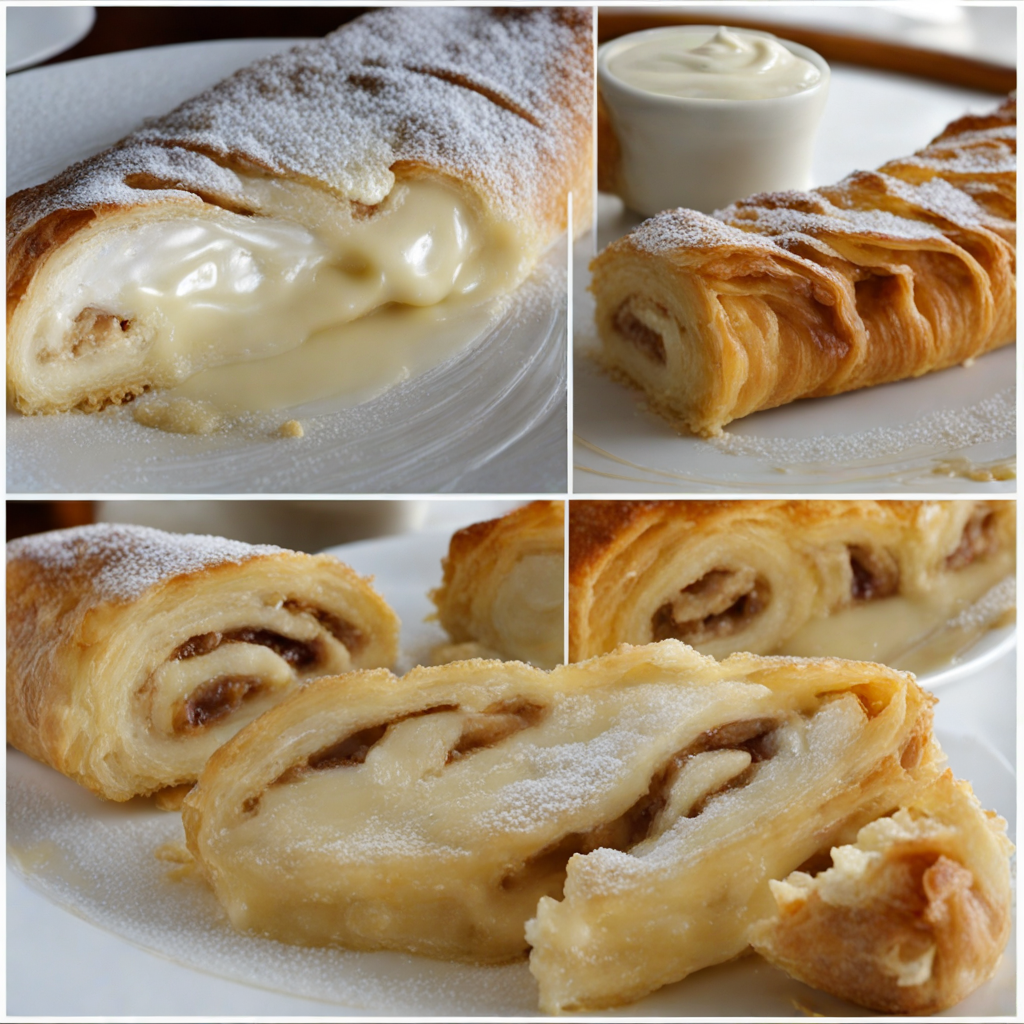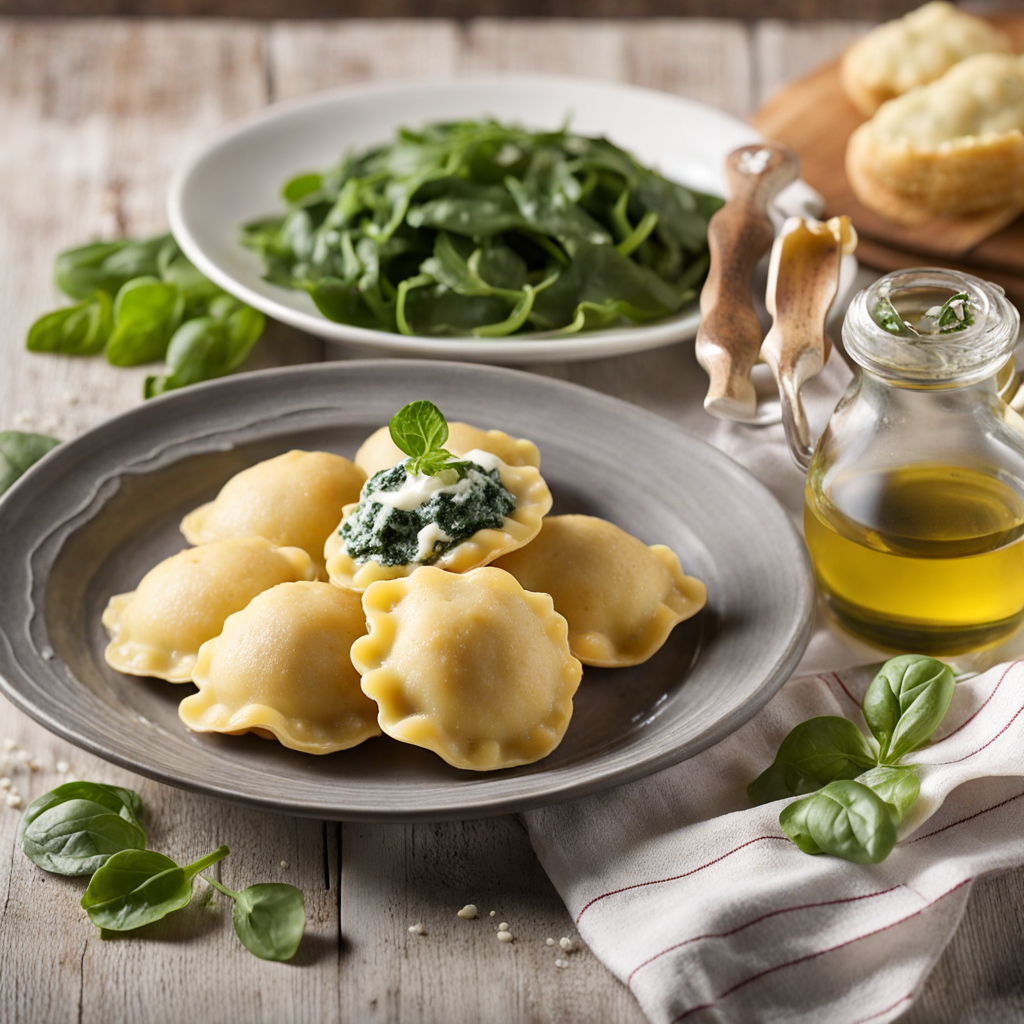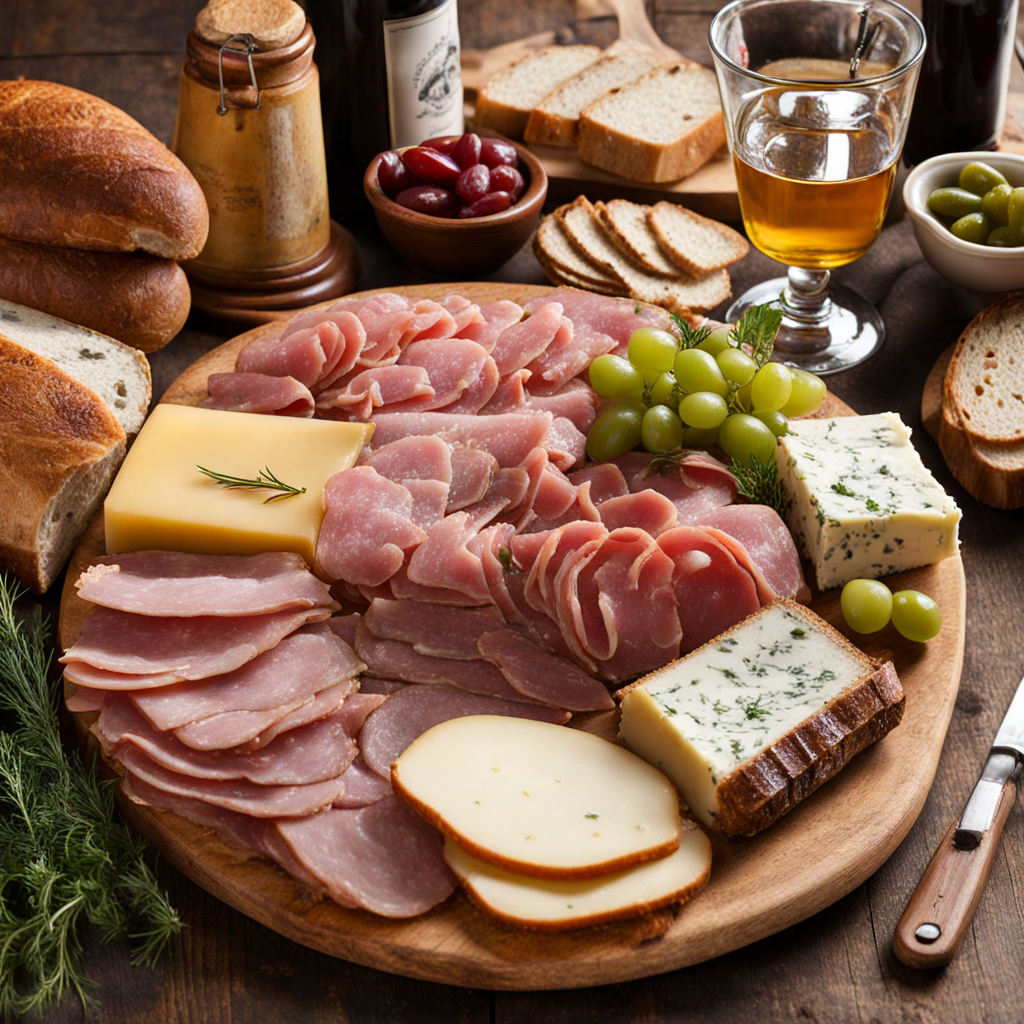Topfenstrudel
Topfenstrudel, a delightful Austrian pastry, is a culinary gem that showcases the rich tradition of Central European desserts. At its core, the strudel is made with a delicate, flaky dough that is skillfully rolled out into an almost translucent layer. This is essential for achieving the characteristic texture that is both crisp and airy. The filling typically consists of Topfen, a fresh curd cheese similar to quark, which lends a creamy richness to the dish. It is often sweetened with sugar and flavored with vanilla, citrus zest, or even a hint of cinnamon, creating a harmonious balance of flavors that dance on the palate. What sets Topfenstrudel apart is its versatility; while the classic version highlights the cheese filling, it can also incorporate a variety of ingredients such as raisins, nuts, or fresh fruits, making each bite a unique experience. The strudel is usually dusted with powdered sugar, adding a touch of sweetness and visual appeal. When baked to golden perfection, the outer layer becomes beautifully crisp while the inside remains moist and luscious, inviting you to savor every mouthful. The contrast between the flaky crust and the smooth, rich filling is nothing short of heavenly. Enjoying Topfenstrudel is best done warm, straight from the oven, perhaps accompanied by a dollop of whipped cream or a scoop of vanilla ice cream. This delightful dessert is commonly served in Austrian cafes and bakeries, making it a perfect way to indulge in local culture. Whether you’re a seasoned pastry lover or new to the world of strudels, Topfenstrudel offers a unique taste experience that beautifully encapsulates the essence of Austrian culinary art, inviting you to explore its rich flavors and textures.
How It Became This Dish
Topfenstrudel: A Delicious Journey Through Time and Culture in Austria Topfenstrudel, a delightful pastry filled with quark cheese (known as "Topfen" in German), is a beloved dessert that embodies the rich culinary tradition of Austria. This delectable dish, with its flaky layers and creamy filling, is not just a treat for the senses but also a story of cultural evolution, regional influences, and historical significance. Origins: A Fusion of Cultures The roots of Topfenstrudel can be traced back to the broader strudel family, which has a storied history in Central European cuisine. Strudel, meaning "whirlpool" in German, is characterized by its thin, layered dough that is rolled and filled with various ingredients, then baked until golden. The origins of strudel dough itself are believed to have been influenced by the Ottoman Empire, which brought the concept of making thin pastry to the regions of Hungary and Austria in the 16th century. The iconic dish was likely inspired by Turkish baklava, where layers of pastry are filled with nuts and honey. The introduction of quark cheese, a staple in many Central European kitchens, further enriched the strudel tradition. Quark, or Topfen, is a fresh dairy product that has a creamy, slightly tangy flavor, making it an ideal filling for strudel. The combination of flaky pastry and creamy cheese filling reflects the merging of various culinary influences—from the Eastern European dairy traditions to the Austrian love for pastry. By the 18th century, Topfenstrudel began to emerge as a distinct variant within the broader strudel family, particularly in the regions of Austria and its neighboring countries. Cultural Significance: A Symbol of Austrian Identity Topfenstrudel is not merely a dessert; it holds significant cultural importance in Austria. In a country where food is deeply intertwined with identity and tradition, Topfenstrudel represents the rural agricultural heritage of the Austrian people. Quark cheese, which is often made at home or sourced from local dairies, speaks to the agrarian roots of many Austrian communities. Strudel itself has become a symbol of Austrian cuisine, often featured in celebrations, family gatherings, and festivals. Topfenstrudel, in particular, is a staple at many Austrian coffeehouses, where it is traditionally served with a dollop of whipped cream and a dusting of powdered sugar. The café culture in Austria, especially in cities like Vienna, is renowned for its pastries, and Topfenstrudel has a special place on the menu, showcasing the country's love for sweet treats. Moreover, Topfenstrudel reflects the seasonal and regional aspects of Austrian cooking. Depending on the time of year, the filling can be adapted to include seasonal fruits such as apples, cherries, or berries, highlighting the importance of local ingredients in Austrian cuisine. This adaptability ensures that Topfenstrudel remains relevant through the ages, bridging generations and evolving with changing tastes while maintaining its traditional roots. Development Over Time: From Rustic to Refined As Austria underwent various cultural and political changes, so too did its cuisine. The 19th century marked a period of significant transformation, especially during the Austro-Hungarian Empire. This era brought about a flourishing of the arts, including culinary arts, and Topfenstrudel began to gain popularity beyond rural households. It became a fixture in urban bakeries and pastry shops, where skilled bakers refined the technique of making strudel dough to achieve an even lighter, flakier texture. In the 20th century, the impact of globalization and the movement of populations led to further evolution in the recipe and presentation of Topfenstrudel. As Austrians emigrated and settled in different parts of the world, they took their culinary traditions with them. This diaspora resulted in variations of Topfenstrudel that incorporated ingredients and techniques from other cultures, enriching the dish even further. For instance, in North America, where quark cheese was less accessible, similar cheeses or ricotta were sometimes used as substitutes, leading to new interpretations of the classic. The late 20th and early 21st centuries saw a renewed interest in traditional foodways, particularly among younger generations eager to connect with their cultural heritage. Topfenstrudel experienced a renaissance as home bakers sought to master the art of strudel-making. Cookbooks, cooking shows, and online tutorials made the technique more accessible, encouraging a new generation to embrace this time-honored pastry. Contemporary Enjoyment: A Timeless Classic Today, Topfenstrudel continues to be celebrated as a quintessential Austrian dessert. It is often enjoyed as a comforting treat, evoking memories of home and family gatherings. Modern interpretations may include variations with added spices such as cinnamon or nutmeg, or even a drizzle of chocolate for an indulgent twist. However, the essence of the dish remains rooted in its traditional preparation. In Austria, Topfenstrudel is commonly served during festive occasions, such as Easter and Christmas, where it is often accompanied by seasonal fruits or festive sauces. It is also a popular choice in restaurants and cafés, where patrons can savor it alongside a cup of rich Viennese coffee. The dish has transcended mere sustenance; it has become a symbol of hospitality and warmth, inviting people to gather and share in its delightful flavors. Additionally, Topfenstrudel has found a place in gourmet settings, where chefs experiment with presentation and pairing, elevating it to a fine dining experience. The versatility of the dish ensures that it remains relevant in contemporary cuisine while honoring the traditions that have shaped it. Conclusion: A Culinary Legacy Topfenstrudel is more than just a delicious pastry; it is a testament to the rich cultural tapestry of Austria. From its humble origins rooted in the fusion of different culinary traditions to its status as a beloved symbol of Austrian identity, the history of Topfenstrudel reflects the evolution of a nation and its food. As it continues to be enjoyed by new generations, this timeless dish serves as a delicious reminder of the connections we share through food, transcending time, place, and culture. Whether savored in a cozy café in Vienna or recreated in a home kitchen, Topfenstrudel remains a cherished part of Austria’s culinary heritage, ensuring that its legacy will endure for years to come.
You may like
Discover local flavors from Austria







